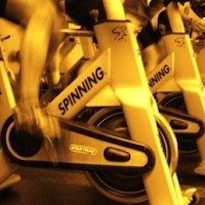By now, you’ve worked through Parts 1–4 of this series, so you’ve got the education, physiology, and coaching language to help your riders pedal more quickly and more efficiently. You’ve explored the mindset, the drills, the progressive structure, and the cueing to anchor these skills in every ride—not just in drill-focused classes. Taken together, you should feel well-equipped to coach high cadence with clarity and confidence.
In this final installment, I created a short educational video to highlight 3 additional tips that often make the difference for riders who still struggle with leg speed.
Tip #1 is a technique secret I brought over from my years as a ski instructor. A common reason some riders “top out” and can’t comfortably pedal past 90–95 rpm is not fitness, it’s how they are organizing their body while pedaling. There is a simple technique concept I learned from coaching skiing that applies beautifully to cycling cadence, indoors and out. When you apply this one change, the legs immediately have more freedom to spin more quickly. I’ll show you exactly how in the video.
Tip #2 relates directly to the neuromuscular adaptations we seek—how your nervous system learns to fire faster, more efficiently, and with less wasted energy.
Tip #3 answers the question: Should you ever stand at high cadence? If so—how fast, how long, and what do you watch for?
Watch the video below—and if you still have questions about coaching or teaching higher cadence, put them in the comments. If I see recurring themes or sticking points, I’ll do another video for you.
Other articles in this series:
How to Develop a Faster Cadence, Part 1: Why Cadence Matters
How to Develop a Faster Cadence, Part 2: Four Considerations for Training Leg Speed
How to Develop a Faster Cadence, Part 3: More Drills and 6 Profiles to Improve Cadence
How to Develop a Faster Cadence, Part 4: Make Cadence an Everyday Focus (and Powerful Cues to Coach It)


Love the video aspect, so much easier to understand that written instruction. Please include more!
tip one was a great insight. the skiing analogy was super, and I’m not even a skier.
I also don’t use hicadence standing sequences but I do use a cue “no pogo sticks” to encourage smoother control at reasonable cadences when in standing position.
Glad they helped!
Have you got links to these videos?
Hi Suzanne, the video is in the post—make sure you are logged in to get access. It’s one video that has three tips.
This summer, I completely rewrote the series on how to add resistance. This series on cadence is also in the rewrite stage, so I will have a new version out shortly with some new information. I’m debating whether to create a new video or use this older one—it still has excellent information.
Loved the example you used as a ski instructor to explain the importance of “upper/lower body separation” as it relates to form and efficient peddling. With regard to your second and third points, I also try to explain the difference between high twitch vs slow twitch muscle use. Thank you for what you do with your association.
You are very welcome, Gary. I also like that example a lot—I hope it doesn’t get lost on non-skiers!
You are so right, understanding that there are different muscle fibers that specialize in different things can be helpful, too.
Thank you so much! I have been trying to explain that to a group ( who I sort of adopted from another instructor who wanted them to “bob” ugghhhh). So well put!